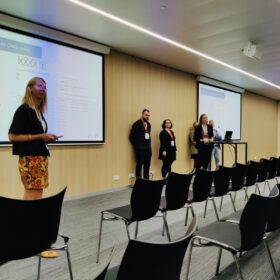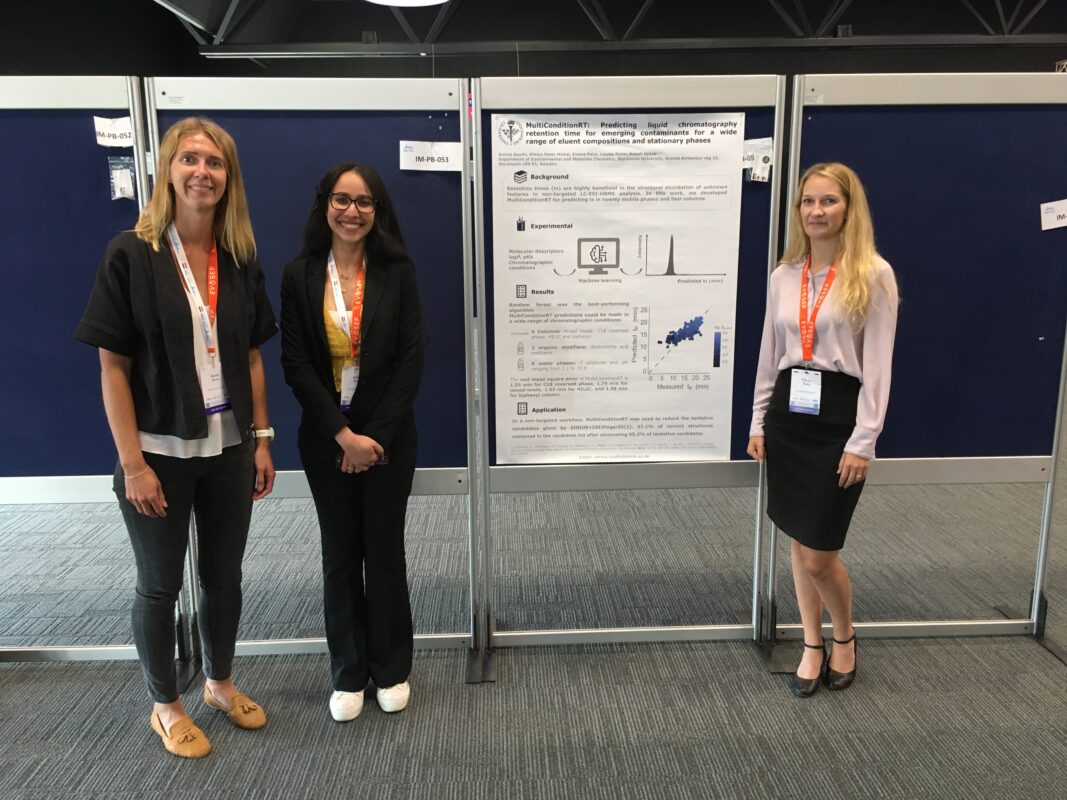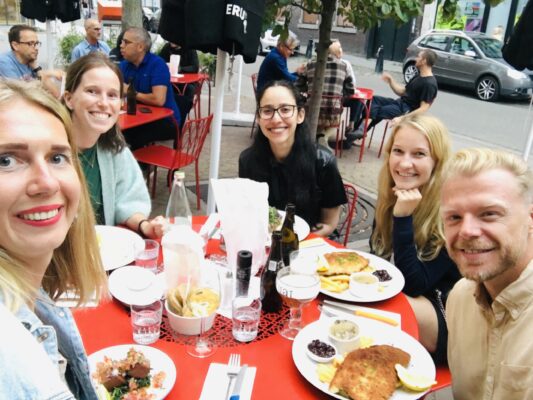
Last week Amina, Pilleriin, and I participated in the International Mass Spectrometry conference 2022 in Maastricht, The Netherlands. With more than 1300 participants IMSC was the first big mass spec conference in Europe after covid and a special feeling of enthusiasm was in the air.
We kicked off on Monday morning with a session on environmental mass spec. The talks addressed water pollution from small to large molecules. Firstly, Frederik Been gave an overview of different strategies for contaminants screening in water that his team in KWR has developed. The three main topics Frederik focused on rolled around making the best use of data in pinpointing the emerging contaminants with nontarget screening (NTS) with liquid chromatography high-resolution mass spectrometry (LC/HRMS). Firstly, he introduces a concept of using toxicity and concentration estimates for prioritizing features detected with nontarget LC/HRMS that we were also lucky to collaborate with Frederik’s team over the last years. He also gave an overview of Nienke Meekel’s work on online prioritization via triggering MS2 spectra for potentially toxic chemicals. Last but not least, Frederik explained the importance of spectral quality and gave insight into an upcoming machine learning algorithm for assessing the quality on the fly.
Also, Dagny Aurich gave an overview of using nontarget screening alongside unraveling historic contamination in mining areas that she is working on in the LuxTIME project. Dagny also works on incorporating historic documents into understanding the contamination from previous times which received significant attention in the panel discussion. Jeroen Meijer complemented these talks with an overview of effect-directed analysis for the identification of thyroid hormone system disruptors. Most interestingly, his experiences hinted toward significant mixture effects, where all tested human blood extracts showed activity while after chromatographic fractionation only two individual fractions showed activity. For me, this highlighted how complicated it is to relate individual nontarget screening peaks with the total activity of the sample.

From the large molecules point of view, Frances Pauelsen introduced her recent work on determining water-soluble polymers in the aquatic environment, namely polyethylene oxide with size exclusion chromatography (SEC) and ESI/HRMS. A wide range of polyethylene oxide where the identification was based on diagnostic fragment ions. Also, Claudia Tugui highlighted the possibilities of proteomics in wastewater analysis.
From our team, Pilleriin presenting MS2Tox Pilleriin Peets presented her research on predicting toxicity for detected but unidentified features in NTS LC/HRMS with MS2Tox. MS2Tox is a tool that will allow us to sieve out the hazardous features prior to the complicated and time-consuming identification of every single detected feature. Also, it comes in handy if the experimental toxicity values of the identified chemicals are not available. Amina Souihi presented her work on reducing the list of candidate structures in NTS LC/HRMS by predicting the retention time for the detected chemicals. The significance of Amina’s work is that now retention times can be predicted for reversed phase, mixed-mode, HILIC, and biphenyl columns and virtually any imaginable pH and buffer type. Amina’s work was also recently published in the Journal of Chromatography A.It turns out I am a real fan of IMSC and have missed only one IMSC since my first conference in Bremen in 2009, where I had my first big stage presentation. I am really looking forward to the next IMSC in Melbourne in two years.



